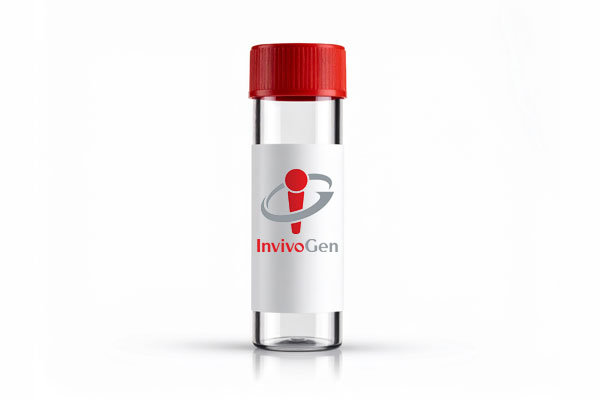
Anti-hTLR1-IgG
-
Cat.code:
mabg-htlr1-2
- Documents
ABOUT
Human TLR1 Neutralizing Antibody - Monoclonal Mouse IgG1 (H2G2)
Anti-hTLR1-IgG (clone H2G2) is a monoclonal antibody specific for human Toll-like receptor 1 (hTLR1, CD281). This antibody can be used for the neutralization of hTLR1. It blocks cellular activation induced by agonists that are recognized by TLR1 and TLR2, such as Pam3CSK4. Anti-hTLR1-IgG is produced in hybridoma cells and purified by affinity chromatography.
TLR1 is predominantly expressed in the spleen and peripheral blood cells. No direct ligands have been identified for TLR1. TLR1 acts as a co-receptor for TLR2. These two TLR receptors form heterodimeric complexes on the cell surface and in the cytosol [1].
Key features:
- Reacts with human TLR1
- Provided azide-free
- Each lot is functionally tested
Reference:
1. Sandor F. et al., 2003. Importance of extra- and intracellular domains of TLR1 and TLR2 in NF-kappa B signaling. J Cell Biol. 2003 Sep 15;162(6):1099-110.;
All products are for research use only, and not for human or veterinary use.
SPECIFICATIONS
Specifications
Human TLR1
Neutralizing human TLR1-induced cellular activation
Sodium phosphate buffer with glycine, saccharose, and stabilizing agents
Negative (tested using EndotoxDetect™ assay)
Neutralization assay
Each lot is functionally tested and validated.
CONTENTS
Contents
-
Product:Anti-hTLR1-IgG
-
Cat code:mabg-htlr1-2
-
Quantity:2 x 100 µg
Shipping & Storage
- Shipping method: Room temperature
- -20°C
- Avoid repeated freeze-thaw cycles
Storage:
Caution:
Details
Immunity to invading pathogens by sensing microorganisms. These evolutionarily conserved receptors recognize highly conserved structural motifs only expressed by microbial pathogens, called pathogen-associated microbial patterns (PAMPs). Stimulation of TLRs by PAMPs initiates a signaling cascade leading to the secretion of proinflammatory cytokines following NF-κB activation. To date ten human and twelve murine TLRs have been characterized, TLR1 to TLR10 in humans, TLR1 to TLR9, TLR11, TLR12 (aka TLR11), and TLR13 in mice, the homolog of TLR10 being a pseudogene.
TLR1 is predominantly expressed in the spleen and peripheral blood cells. No direct ligands have been identified so far for TLR1, and its function remains unclear. TLR1 seems to act as a coreceptor for TLR2. TLR1 and TLR2 form heterodimeric complexes on the cell surface and in the cytosol [1]. TLR1 and TLR2 were shown to cooperate in recognizing Borrelia burgdorferi outer-surface protein A lipoprotein OspA [2]. They also interact to recognize the 19-kD mycobacterial lipopeptide and several synthetic triacylated lipopeptides [3], but not diacylated lipopeptides. This suggests that TLR1 is able to discriminate among lipoproteins by recognizing the lipid configuration [4].
1. Sandor F. et al., 2003. Importance of extra- and intracellular domains of TLR1 and TLR2 in NFkappa B signaling. J Cell Biol. 2003 Sep 15;162(6):1099-110.
2. Alexopoulou L. et al., 2002. Hyporesponsiveness to vaccination with Borrelia burgdorferi OspA in humans and in TLR1- and TLR2-deficient mice. Nat Med. 8(8):878-84.
3. Takeuchi O. et al., 2002. Cutting edge: role of toll-like receptor 1 in mediating immune response to microbial lipoproteins. J Immunol, 169(1):10-4.
4. Takeuchi O. et al., 2001. Discrimination of bacterial lipoproteins by Toll-like receptor 6. Int Immunol, 13(7):933-40.
DOCUMENTS
Documents
Technical Data Sheet
Safety Data Sheet
Certificate of analysis
Need a CoA ?
